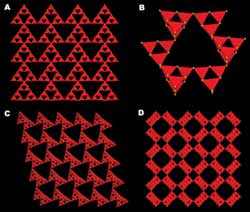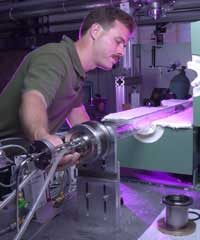Materials Sciences
Materials management deals with the research, development, manufacturing and processing of raw and industrial materials. Key aspects here are biological and medical issues, which play an increasingly important role in this field.
innovations-report offers in-depth articles related to the development and application of materials and the structure and properties of new materials.

For markets of the future, success depends on advanced materials
Technical Insights’ materials and chemicals research service: Advanced materials technology
Advanced materials look set to revolutionize numerous applications in the 21st century. Scientists and engineers are undertaking extensive research activities in their quest to develop sophisticated new materials that are more durable, environmentally friendly, and energy efficient.
“Advanced materials and chemicals are the enabling building blocks for future devices and systems,

New generation of advanced membranes
The development of a new generation of membranes based on conducting polymers has been the subject of a recent line of research in the Department of New Materials at CIDETEC, in association with the LEIA Technological Centre.
This involves a field of work wherein the excellent advantages presented by electro-dialysis conventional membranes (continuous separation, low energy consumption, ease of combination with other separation processes, absence of additives) are combined with other, highl

Engineers Take New Look at StrengthofIndustrial Glass Fiber
An Ohio State University engineer and his colleagues have discovered something new about a 50-year-old type of fiberglass: it may be more than one and a half times stronger than previously thought.
That conclusion, and the techniques engineers used to reach it, could help expand applications for glass fibers.
Though the glass fiber industry is currently suffering the same economic woes as many other businesses, the time is right to lay the groundwork for future applications, said P

Electronic Circuit Rides a Chemical Film
Chains of molecules known as conducting polymers are versatile materials that can work like electronic circuits. Potential uses include flat panel displays, solar panels, sensing devices and transistors, to name just a few. Their invention won three scientists the Nobel Prize in chemistry.
But to make useful devices from conducting polymers requires a degree of chemical wizardry that often proves elusive. University of Illinois at Chicago chemistry professor Luke Hanley has found a new and

UC Riverside scientists synthesize new porous materials
New materials will have applications in electronic and optoelectronic devices, electrocatalysis, electroanalysis and sensors
Scientists at the University of California, Riverside have synthesized a large family of semiconducting porous materials that have an unprecedented and diverse chemical composition.
The new materials show several different properties such as photoluminescence, ion exchange, and gas sorption. They also have a large surface area and uniform pore sizes. I

Jefferson Lab’s Free-Electron Laser explores promise of carbon nanotubes
Jefferson Lab’s Free-Electron Laser used to explore the fundamental science of how and why nanotubes form, paying close attention to the atomic and molecular details
Scientists and technologists of all stripes are working intensively to explore the possibilities of an extremely strong and versatile cylinder so tiny that millions — which in bunches look like an ebony snowflake — could fit easily on the tip of a pin. The objects in question are known as carbon nanotubes, first discov